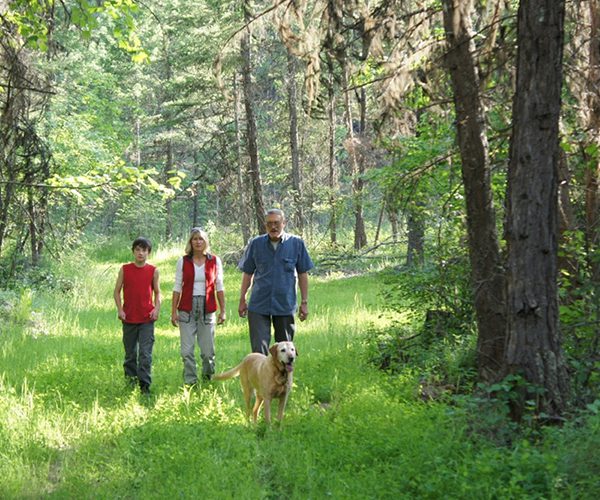Why are children so happy running through puddles and raising millions of dirty splashes?

Why do children love running through puddles, raising millions of dirty splashes, with no regard for their footwear and the color of their clothing?
Why do they passionately spend hours in sandboxes building sand towns and sculpting sand animals, cars, pies? Of course, their hands and faces get dirty, and this may cause displeasure to their parents who think that dirty hands are unhygienic.

Children are so fond of running through farmers’ fields, climbing trees, catching tadpoles, although it is inevitable that their whites will turn brown before the end of the day.
But dirty clothes and dirty hands are not so bad, scientists say, if we take into account the strong positive effect of the dirt on the well-being and health of children.

Today, many parents may secretly wish their children had the chance to pick up a bit of grime. With the rise of urbanism, and the allure of video games and social media, contact with nature is much rarer than it was in the past. For many, there is simply no opportunity to get muddy.
What is gained in laundry bills may be lost in the child’s wellbeing. According to recent research, the dirt outside is teaming with friendly microorganisms that can train the immune system and build resilience to a range of illnesses, including allergies, asthma and even depression and anxiety.
These findings show that outdoor exercise is not only beneficial because of the chance to roam free – but that certain natural materials, such as soil and mud, also contain surprisingly powerful microorganisms whose positive impact on children’s health we are only beginning to fully understand.
Mental restoration
Many of the psychological benefits of outdoor play are already well established. Our brains evolved in natural landscapes, and our perceptual systems are particularly well suited to wild outdoor spaces.
This means that natural scenes provide the perfect level of stimulation, which is thought to help recharge the brain when it is tired and easily distractable.

Supporting this theory, one study from 2009 found that children with attention-deficit hyperactivity disorder (ADHD) were better able to concentrate following a 20-minute walk in the park, compared to a 20-minute walk on the streets of a well-kept urban area. Being in the proximity to grass and trees seemed to have had a beneficial effect on their minds. The authors recommended using such “doses of nature” as a safe and accessible way of supporting children with ADHD, alongside other tools.
When it comes to the child’s physical health, the most obvious advantage of outdoor play may be the exercise. A child may find it easier to build up strength and stamina in a large open space resulting in a reduced risk of obesity.

The latest findings, however, suggest there could be a host of other advantages to playing in natural environments – and the secret may be alive and wriggling around in the mud itself.
Besides these restorative effects, outdoor play can offer valuable learning experiences. Such activities – away from the house or classroom – may also help children to find ways to cope with emotions that may be hard to explore in other environments.
Old friends
The new research offers a fresh take on the “hygiene hypothesis”, first postulated in the late 1980s. According to this idea, the great reduction in childhood infections over the 20th century had an undesirable side effect on people’s immune systems, leading them to become overreactive to the slightest stimulation. The result was thought to be the rise in asthma, hay fever and food allergies.
Many scientists now dislike the term hygiene hypothesis, however, since it seemed to discourage important behaviors like hand-washing.
Instead, it is the non-infectious organisms that are now thought to be key – rather than the ones that actually make our children sick. These “old friends” have been around for much of our evolutionary history. They are mostly harmless, and train the immune system to moderate its activity, rather than overreacting to any potential invader.
Importantly, our bodies meet these old friends whenever we spend time in nature.

With increased urbanization, and reduced outdoor play, many children now lack that exposure – meaning that their immune systems are more sensitive to any threat, and more likely to go into overdrive.
Friendly microbes in the gut can improve our health, and they may also act through our skin.
Various studies support this idea. People who grow up on farms are generally less likely to develop asthma, allergies, or auto-immune disorders like Crohn’s disease – thanks, apparently, to their childhood exposure to a more diverse range of organisms in the rural environment that had encouraged more effective regulation of the immune system.
The outer layer of our body hosts many species of microbes, and people with disorders such as atopic dermatitis (a common form of eczema) and psoriasis seem to have an impoverished community of these organisms. The microbial diversity even seems to be linked to conditions like arthritis. “These microorganisms can play a major role in many major chronic diseases,” says Michele Antonelli, a doctor from Reggio Emilia, Italy, who has researched the ways that mud therapies can influence health.
Antonelli suggests that many spa therapies – including mud baths and thermal mineral water baths – may improve our health by introducing beneficial organisms to the skin’s microbial communities.

Healthy body, healthy mind
Most surprisingly, friendly bugs from nature can even moderate the body’s response to stress.
When we feel vulnerable and threatened, the immune system starts raising bodily inflammation. Since inflammation is one of the first defenses against infection, this response evolved as a way of preparing the body for a potential physical injury from the threat we were facing – but it’s less useful for the kinds of stresses most people face today.
Remarkably, people who spent the majority of their childhoods in a rural setting tend to show a more muted response to stressful events, compared with those who had grown up in cities.

The people who grew up in cities are kind of ‘walking time bombs’, in terms of their inflammation,” says Christopher Lowry, a professor of integrative physiology and the director of the behavioral neuroendocrinology laboratory at the University of Colorado, Boulder, US.
Forest transplants
Given the importance of early exposure to friendly bacteria, many scientists are investigating the benefits of interventions that encourage greater contact with nature in childhood.
Antonelli says that the act of “forest bathing” – gentle meditative walks through the woods – has been shown to improve the symptoms of children and teenagers with atopic dermatitis, for example. By touching the leaves and the soil, they may have picked up friendly organisms that enriched their skin microbiomes, he says.
An ambitious project in Finland, meanwhile, attempted to bring nature to the children. In four day-care centers, the researchers replaced the asphalt and gravel of the schoolyard with “transplanted” soil and vegetation taken from a boreal forest floor.

They were also given planting boxes for gardening. “That encouraged further contact,” says Aki Sinkkonen at the University of Helsinki, who specializes in the mud microbiome.
One month later, the children showed signs of heightened microbial diversity on their skin and in their gut, as well as improved immune function. They had greater numbers of the regulatory T cells that help to moderate the body’s reactions to harmless invaders, for example. The proportion of anti-inflammatory molecules in the blood plasma also increased – which again indicates a better regulated immune system.
Mud kitchens and Sand tray therapy.
Given the known psychological benefits, many day-care centers and schools are already encouraging greater contact with nature – with outdoor lessons, regular nature walks and the construction of mud kitchens that encourage children to play in the dirt.
Mud kitchens can be cost effective and take up little space. All you need is an old table and some pots or pans recycled from the kitchen, and filled with a mixture of soil and water. More sophisticated structures could be equipped with cupboards and drawers filled with stones, rocks, sand and vegetation.
So-called “sand tray therapy”, which involves using sand and miniature figurines to express one’s thoughts and feelings, is an accepted form of counselling for children who are struggling to verbalize their emotional state.

Sand tray therapy allows a person to construct their own microcosm using miniature toys and colored sand. The scene created acts as a reflection of the person’s own life and allows them the opportunity to resolve conflicts, remove obstacles, and gain acceptance of self.
As the little mud chefs dirty themselves with their new imaginative creations, they may be cultivating their minds and optimizing their immune systems, with potential benefits for months or even years to come



































